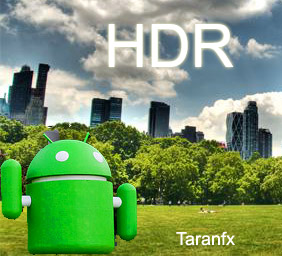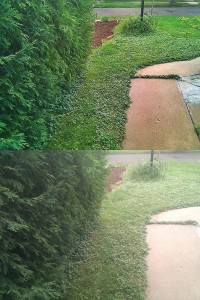 HDR photography was once the thing of the photographers who wished to have Fidelity in their shots.
HDR photography was once the thing of the photographers who wished to have Fidelity in their shots.
Thanks to Apple, with iOS 4.1 update will bring HDR to the iPhone 4, and now everyone wants it. And why not, a good HDR shot can bring out details in shadows, while not over-exposing the lighter elements. It gives your shots a really great hyper-realistic effect, overall increasing the Fidelity.
High dynamic range imaging (HDRI or just HDR) is a set of techniques that allow a greater dynamic range of luminances between the lightest and darkest areas of an image than standard digital imaging techniques or photographic methods. This wider dynamic range allows HDR images to more accurately represent the wide range of intensity levels found in real scenes, ranging from direct sunlight to faint starlight
HDR isn’t a catch-all solution to bad lighting, though. The purpose is to increase the dynamic range. Apple, in iPhone 4, is using auto-bracketing in the app to take three different exposures, then they are combined to produce HDR shot. However, on Android and other mobile platforms, there is no all-in-one solution that works. Few apps have attempted on simulating HDR effect with density and tone mapping.
Method 1: Post-processing images Apps
Photo Enhance Pro can be used to post-process the regular images you take, and process into simulated HDR shots. The app gives option of selecting any existing photos on SD card with the choice of aggressiveness of the effect. Post-processing image is showed against the original so as to show the difference. But the results were deceiving, even at the max settings, results were weak, and post-processing was bad at bumping up the shadows.
Here is the sample of Original vs post-processed image — as you can see results are not at all impressive: (click for larger view)
Let’s take a lo at the better ways of doing it on Android
Method 2: In-camera processing Apps
If done properly, there’s nothing like in-camera processing for HDR. Camera 360 Pro does exactly that, jump to options and enable HDR effects and choose HDR Simulation to be either light, or heavy. The results are generally good. Camera 360 is able to tune the shadow colors to a degree, and retained the detail in the light areas. Of course, its just a simulation, its not as good as the Real HDR.
Only major problem I had with the app was the noticeable pixelation in the darker areas. Camera 360 is available for $3.99 in the Android Market, noting that it has lots of other effects to play with, its worth the investment.
Method 3: Manually Getting the REAL HDR images
If you wish to go beyond simulations, a step closer to Reality, get ready for a bit of the harder side. You’ll have to take at least two images at different exposures, which can be varied in Android camera app. Since Android doesn’t have any auto-bracketing to take multiple exposures in short order, you will have to take multiple shots with different exposures, manually at +2, 0, and -2 first. Few android phones tend to overbrighten it, in that case try going with +1, 0, and -1. For Nexus One, 2 did just fine.
Important thing here is to shoot two exactly identical photos: Prevent shaking hands, prevent changing perspectives, in all ways. Closer the images are, better the results.
Next step – Getting things right in Photoshop
Photoshop has had an automated HDR function since CS2. Once you’ve taken a few photos spread across a range of exposure values, go to File > Automate > Merge to HDR… and select them.
The program will automatically merge all your exposures into a single HDR image and present you with the composite. If it doesn’t look quite right, you can disable certain exposures to change how the merged image looks. Once you’re done, the resulting picture will have a dynamic range far beyond your monitor’s ability to display it. At that point, you should crank the photo’s bit depth down to 16 bits by going into Image > Mode > 16 Bits/Channel… and adjusting the Exposure and Gamma settings to fit.
As I said earlier, there is no integrated solution at this time. But since Apple has jumped into it, we won’t have to wait for long to see such apps coming to Android. For the meantime stick with Camera 360 or the manual method.
We write about Google, Twitter, Security, Open Source, Programming, Web, Apple, iPhone, Android and latest in Tech @taranfx on Twitter or by subscribing below:
loading...
loading...



Full cycle on-device HDR comes to Android: https://market.android.com/details?id=com.almalence.hdr
loading...
loading...